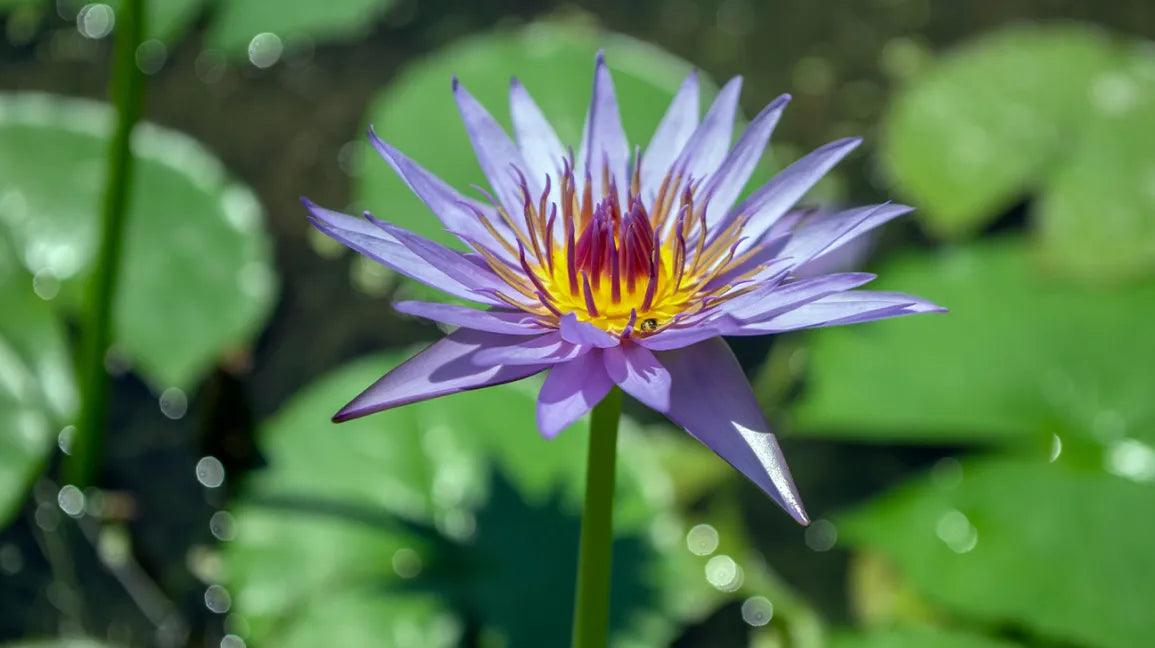
In the realm of enchanting flowers, few possess the captivating allure and rich historical significance as the Blue Lotus (Nymphaea caerulea). This extraordinary aquatic plant, revered for its mesmerizing beauty and spiritual significance, has entranced cultures throughout the ages. Embark on a journey with us as we explore the myriad dimensions of the Blue Lotus flower, unraveling its botanical wonders, cultural symbolism, medicinal properties, and spiritual significance.
1. Botanical Wonder:
The Blue Lotus, native to the Nile region in Egypt, belongs to the Nymphaeaceae family and is characterized by its radiant blue or purple petals. We delve into its botanical characteristics, exploring its cultivation, growth patterns, and the unique adaptations that make it an extraordinary aquatic marvel.
2. Cultural Symbolism:
Throughout history, the Blue Lotus has held immense cultural significance in various civilizations. Ancient Egyptian mythology depicts the Blue Lotus as a symbol of rebirth and the sun god Ra's journey across the sky. We take a deep dive into the cultural symbolism of the Blue Lotus in ancient Egypt, India, and other ancient civilizations, shedding light on its association with spirituality, enlightenment, and divine beauty.
3. Medicinal Properties:
Beyond its ethereal appearance, the Blue Lotus flower possesses remarkable medicinal properties that have been recognized for centuries. We explore its therapeutic potential, including its use as a natural sedative, anti-anxiety agent, and mood enhancer. We delve into the historical context of the Blue Lotus's use in traditional medicine, shedding light on its efficacy and potential applications in modern healthcare.
4. Psychoactive Properties:
One of the most intriguing aspects of the Blue Lotus flower is its psychoactive properties. Ancient Egyptians and other cultures used it in ceremonial rituals and as an entheogen to induce altered states of consciousness. We delve into the history and cultural significance of the Blue Lotus as a psychoactive agent, discussing its effects on the mind and exploring its role in spiritual practices.
5. Contemporary Uses:
In recent times, the Blue Lotus has garnered attention for its potential use in various industries. From perfumery and aromatherapy to herbal teas and skincare, we explore the modern-day applications of this enigmatic flower. Discover how the Blue Lotus is finding its place in the world of natural wellness, and the ongoing scientific research to validate its benefits.
6. Artistic and Literary Inspirations:
The timeless beauty of the Blue Lotus has captured the imaginations of artists, poets, and writers for centuries. We uncover its influence on literature, art, and symbolism in different cultures and discuss notable works inspired by this delicate bloom. From ancient Egyptian murals to contemporary paintings, the Blue Lotus continues to be a muse for creative expression.
7. Conservation Efforts:
As with many natural wonders, the Blue Lotus faces challenges due to habitat loss and environmental degradation. We shed light on the conservation efforts being undertaken to protect this precious flower and its delicate ecosystem. Explore the initiatives and organizations dedicated to preserving the Blue Lotus for future generations to experience and appreciate.
Conclusion:
The Blue Lotus flower is an embodiment of ethereal beauty, cultural heritage, and ancient wisdom. Its captivating allure has transcended time, leaving an indelible mark on the realms of botany, spirituality, and artistic expression. As we conclude our exploration of this remarkable flower, we invite you to embark on your own journey of discovery, connecting with the magic and mystery of the Blue Lotus and allowing its essence to resonate within your soul.



